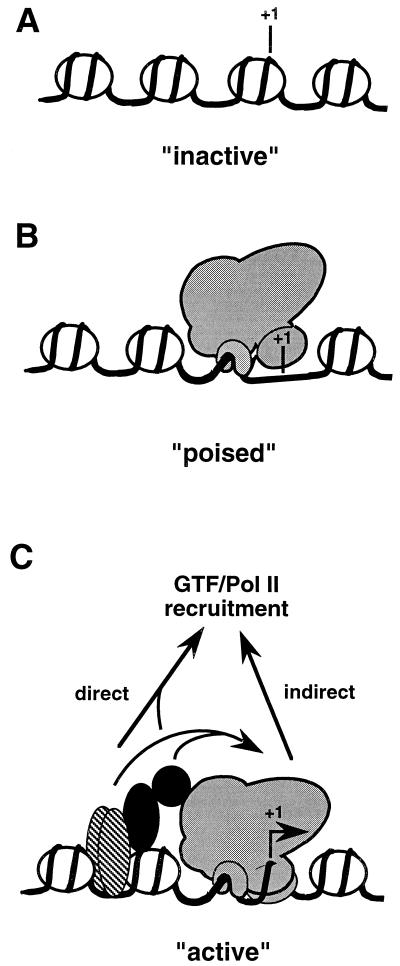Figure 1.
States of gene expression. Within physiological chromatin, each class II gene may be present in any one of three states that thereby determines its capacity to be transcribed. (A) “Inactive” genes are packaged in nucleosomes and inaccessible to the transcription machinery. PIC assembly and initiation must be preceded by major chromatin remodeling that, in some cases, may require DNA synthesis and mitosis. (B) “Poised” genes contain TFIID bound to the core promoter region and thus are rapidly inducible though otherwise inactive. The conformation of this complex, in the absence of an inducing stimulus (activator) renders the promoter inaccessible to RNA polymerase II and other GTFs (or the holoenzyme). (C) “Active” genes contain promoter-bound activators that recruit RNA polymerase II and GTFs (or the holoenzyme) either (i) “indirectly,” by inducing a conformational change in the TFIID–core promoter complex that renders the initiation region accessible or (ii) “directly,” via protein–protein interactions with these components.

